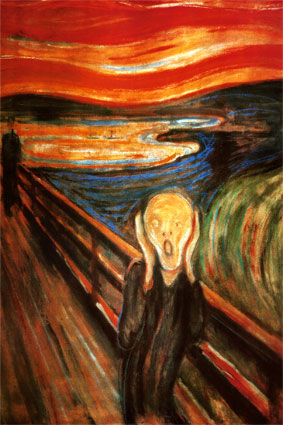0. Art is soul, energy, the animus, the breath, thought, spirit, mind, reason, heart, feeling, conscience, ego, one’s being, put into life. Art is that feeling you get when you’re about to talk to that person you like, when you see your leader on television and feel that inspiration, when you read about 13 year old kids saving lives and feel proud, when you find out your relationship will no longer work out and you feel that emptiness, when you feel amazingly great about the day and wish to convey your great feeling, when you’re excruciatingly bored and want to undo it. Art is the abstract side of conventional human beings.
1. My favorite art forms are film and photography. Film is one of the most profound art forms in the sense that it can encompass imagery, sound, and writing into one medium. Photography does not have the benefit of sound or a script, but still images can also be deep and reflective because the viewer is left to his own devices to understand what the photographer wishes to portray.
2. My favorite historical period is the 50’s. I like the 50’s because the clothes were awesome and I love Lucy was showing on TV.
3. My academic strength is writing, more specifically short essays or creative, concise pieces. I also write for fun, mostly poetry, so writing is pretty natural for me. Non-academically, my strength is photography and imagery. I’m an amateur photographer and I’m also a film connoisseur.
4. I do feel comfortable with new technologies. I learn new things fairly quickly and can adapt like Jason Bourne in Istanbul. If I were amazingly good with Apple computers, I just might call myself a genius.
5. My writing skills are pretty professional. I’ve written for magazines and school papers and one of my hobbies is poetry. I wrote album reviews for a magazine and my mom is also the Publisher/CEO of a Spanish-language newspaper, so I’ve grown up with harsh critics and editors. I don’t enjoy writing for school, but I do what I must.





